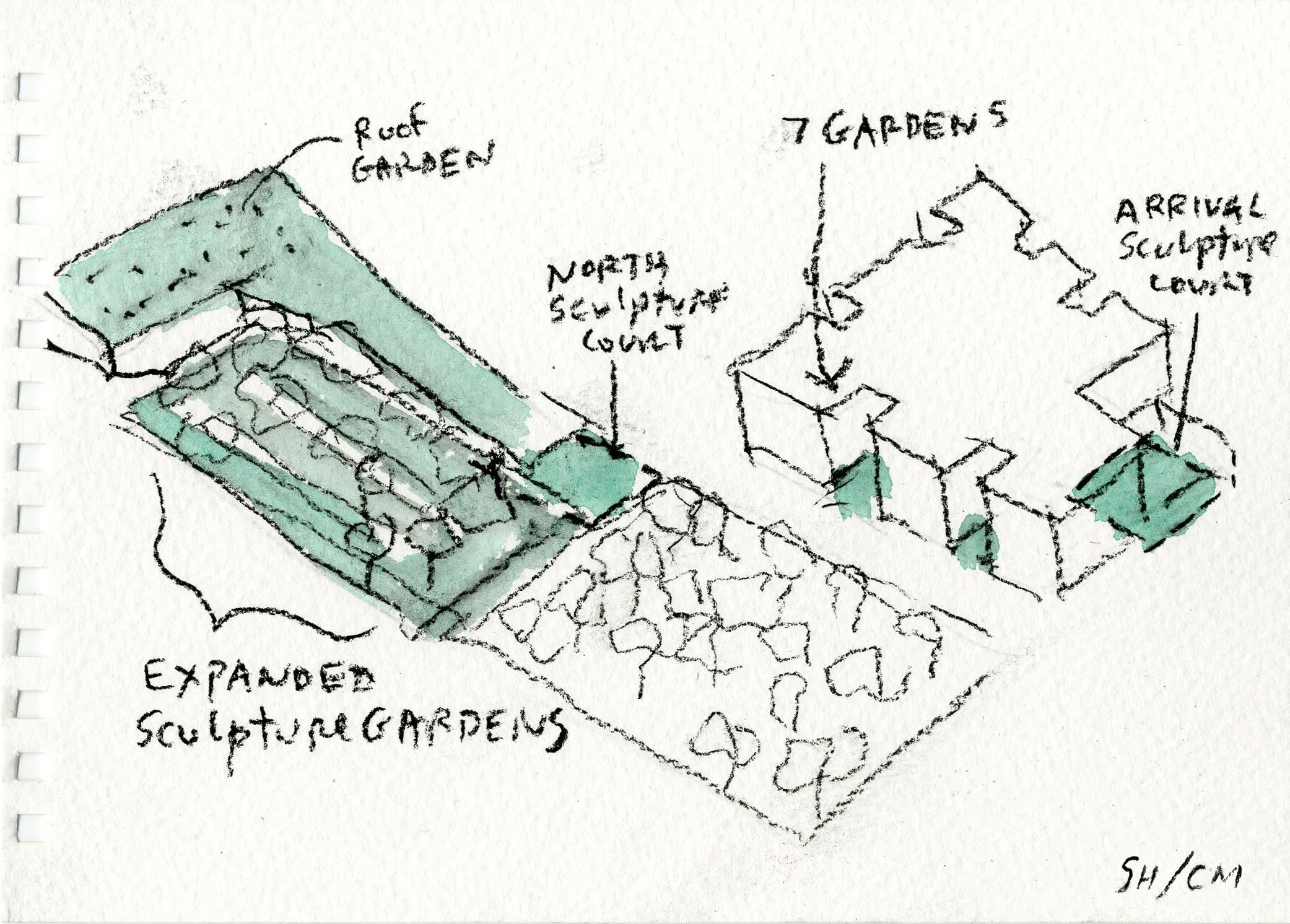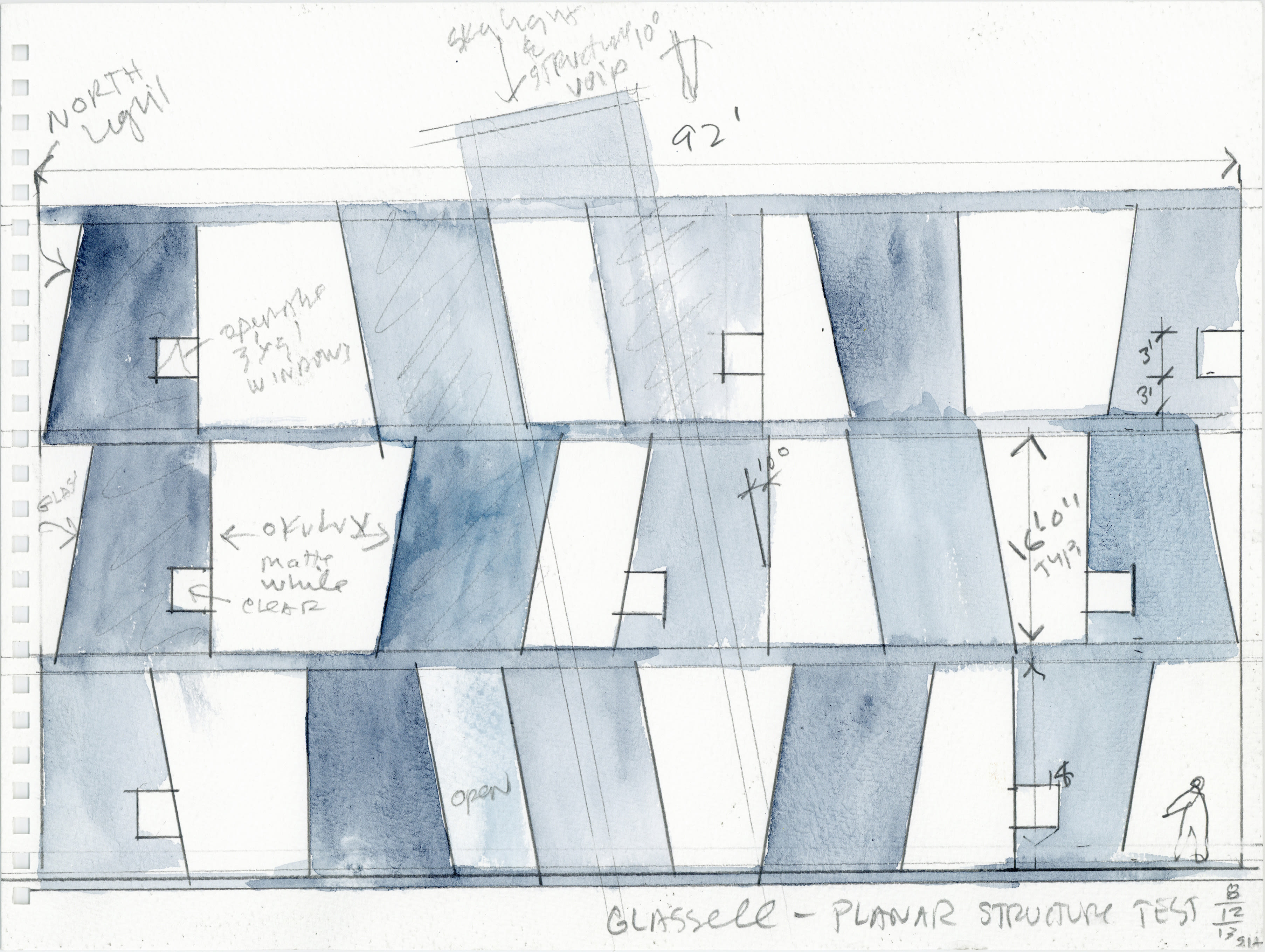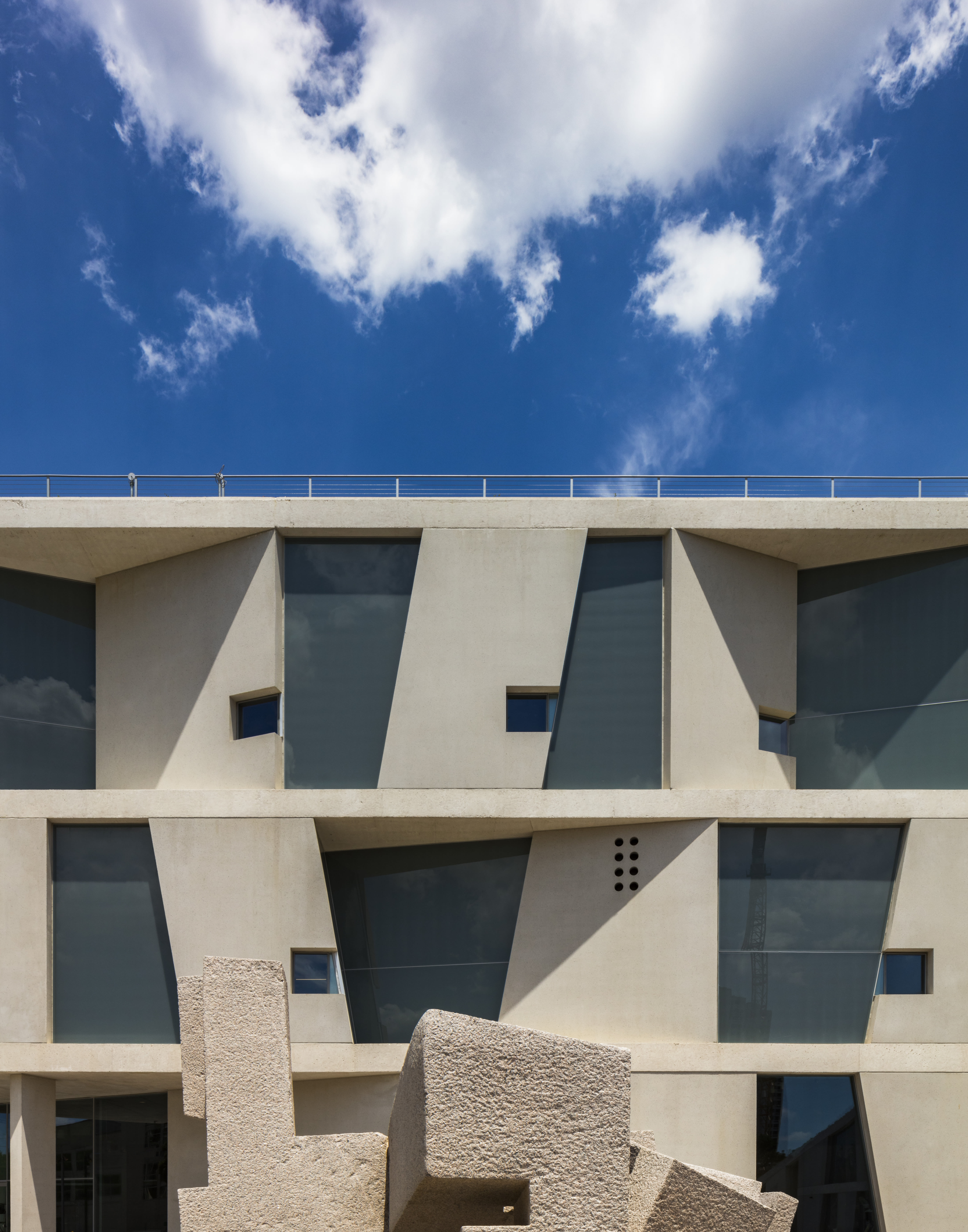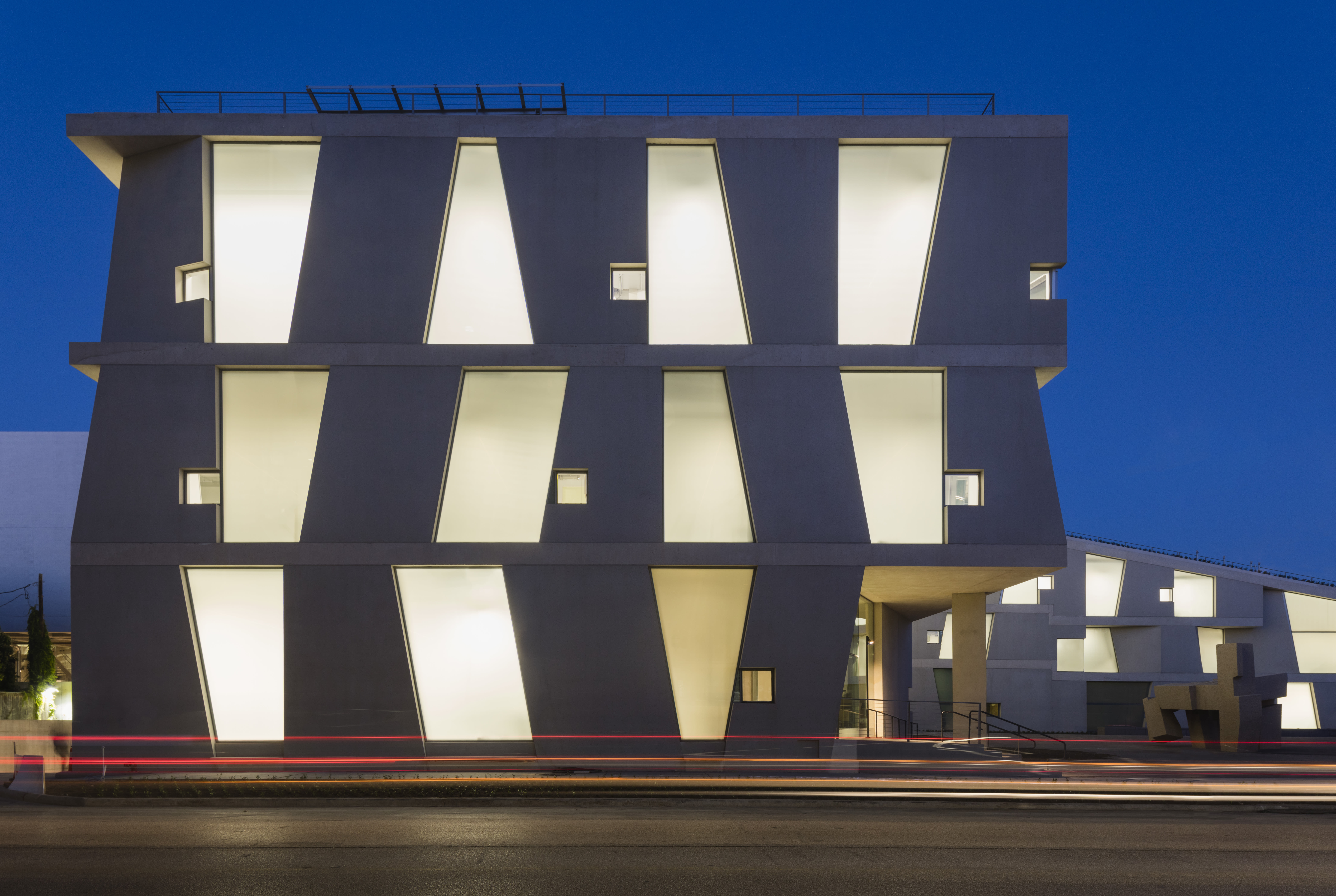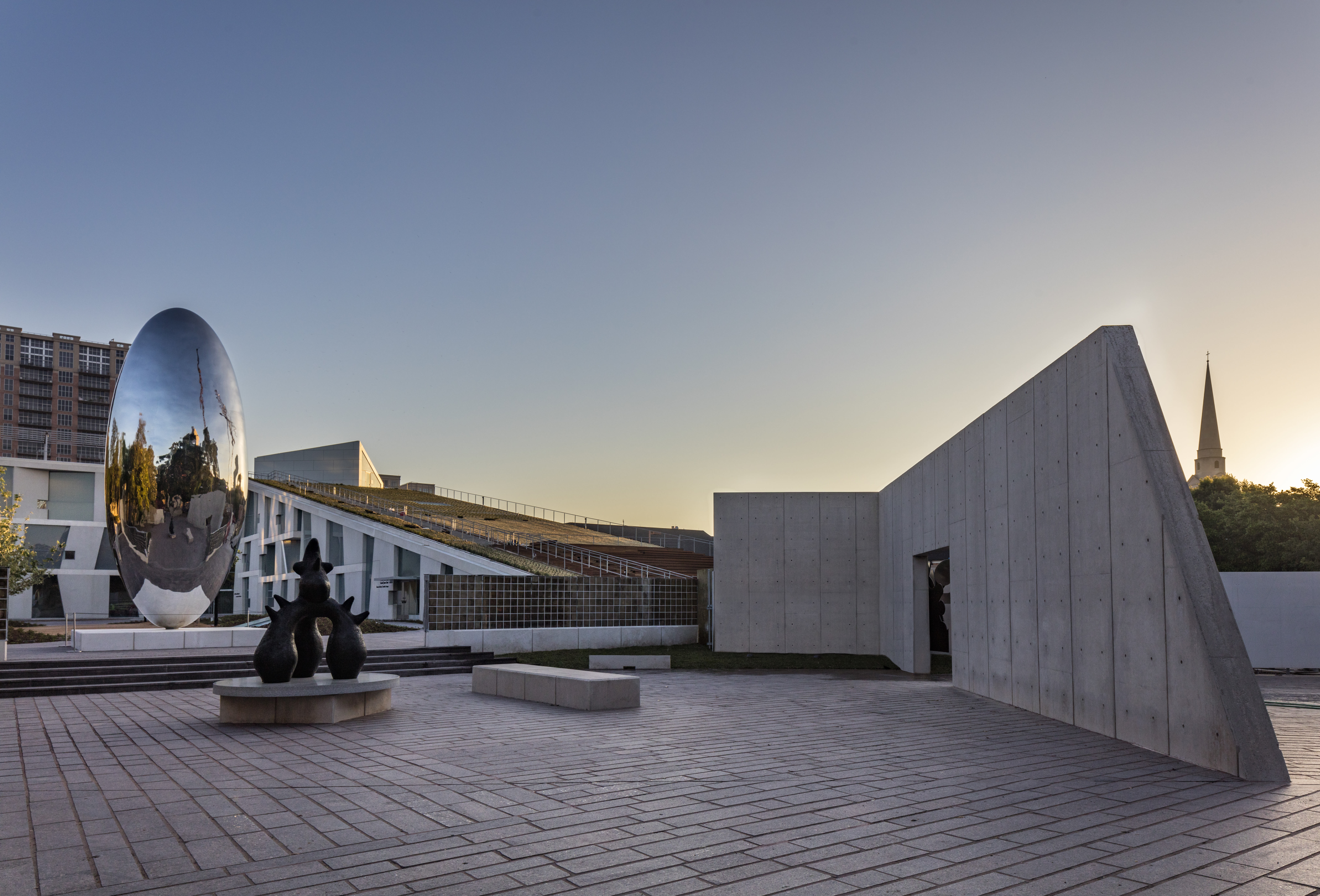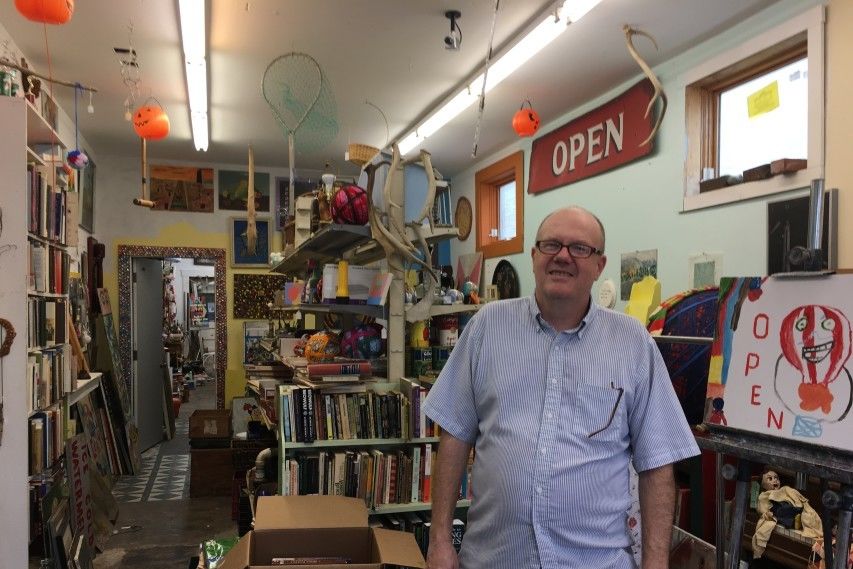Say Hello to the New Glassell School of Art
IT'S HARD TO CHARACTERIZE THE appearance of the new Glassell School of Art.
The Museum of Fine Arts, Houston favors descriptors such as "muscular," "iconic," and "L-shaped." The building's designers at Steven Holl Architects refer to the tessellated façade of concrete and translucent glass panels as both "tectonic" and "animated." We talked with one Museum District resident who's made the tongue-in-cheek habit of referring to the new building as "the doorstop." (To be clear: a beautiful doorstop.)
However you define it, the school’s angular roofline serves as the organizing principle for the $450 million master plan set to stitch together the 14-acre MFAH campus into a uniquely hospitable corner of Houston’s urban free-for-all. Completion of the Glassell School hints at the project’s ultimate cohesiveness: Sloping toward the existing Caroline Wiess Law and Audrey Jones Beck Buildings and mirroring the angles of the adjacent (and oft-forgotten) Cullen Sculpture Garden, the new building seamlessly wedges its way into the neighborhood.
“This is a continuation of the Houston tradition of city building through arts and cultural philanthropy,” said MFAH Director Gary Tinterow at the Monday press tour; moments before, Nancy and Rich Kinder proved his point with the big announcement of a $25 million matching grant to help put the capital campaign over the top within the next year.
By its projected 2020 completion date, the project will add two additional buildings— the Kinder Exhibition Building (dedicated to contemporary art) and the Sarah Campbell Blaffer Foundation Center for Conservation—but the quieter victory is the consolidation of the museum’s various moving parts so that an expanded network of subterranean tunnels links new parking garages, museum spaces, and studios to fashion the campus into an ant colony of creative activity. “Our art school and our art will be closer together than ever before,” Tinterow said, musing about Glassell students bouncing between studio and gallery for inspiration.

The BBVA Compass Roof Garden enjoys unobstructed views of downtown.
Image: Morgan Kinney
The Glassell’s showiest feature, the BBVA Compass Roof Garden, lies well above street level as the culmination of the climbable, greenscaped roofline blanketed with fledgling mounds of asiatic jasmine. The third-story perch offers stunning views of both downtown and the Medical Center skylines, but it’s equally rewarding to peer down at the newly-constructed Brown Foundation Plaza running along Montrose Boulevard.
That public space is notably anchored by Anish Kapoor's Cloud Column—the mirrored, Bean-adjacent sculpture that’s quickly become the MFAH's buzziest acquisition (for better or worse). Nearby, a miniature “bosque” of Mexican sycamores takes roots adjacent to a series of water jets dancing across the "porous," irregularly paved plaza. A multi-tiered wooden amphitheater sits at the base of the sloping roofline, the picturesque setting for some future film or speaker event. Soon, a street level coffee bar will allow pedestrians to pop in for an espresso to enjoy among the plaza's carpet of sweet-scented jasmine.
Bottom line: Landscape architect Deborah Nevins told the press she aspired to create a space the opposite of a “flat, corporate plaza” one might find downtown, and her efforts will be tested this Sunday, May 20, when a family-friendly day of music and activities inaugurates the space.
Beyond this weekend, Glassell Director Joseph Havel reminded that the building foremost has to work as a school when it throws open its doors to students on June 4. As the only museum-affiliated art school serving all ages, from 3-year-olds through gray-haired post-grads, the interior of the three-story, 36-studio building was designed to be flexible, functional, and durable. “We want to be able to put a hole in the wall and patch it,” he joked.
This facility replaces the original 1979 warehouse-style building from Houston architects Eugene Aubry and R. Nolen Willis. The building had its charms, but Havel, who’s been with the school since 1991, quickly rattled off critical flaws, from a “pre-digital” design that didn’t accommodate the needs of a modern art curriculum to a leaky roof that regularly meant using buckets to catch rainwater. Havel described watching the demolition of his longtime office with a sort of bittersweet satisfaction.
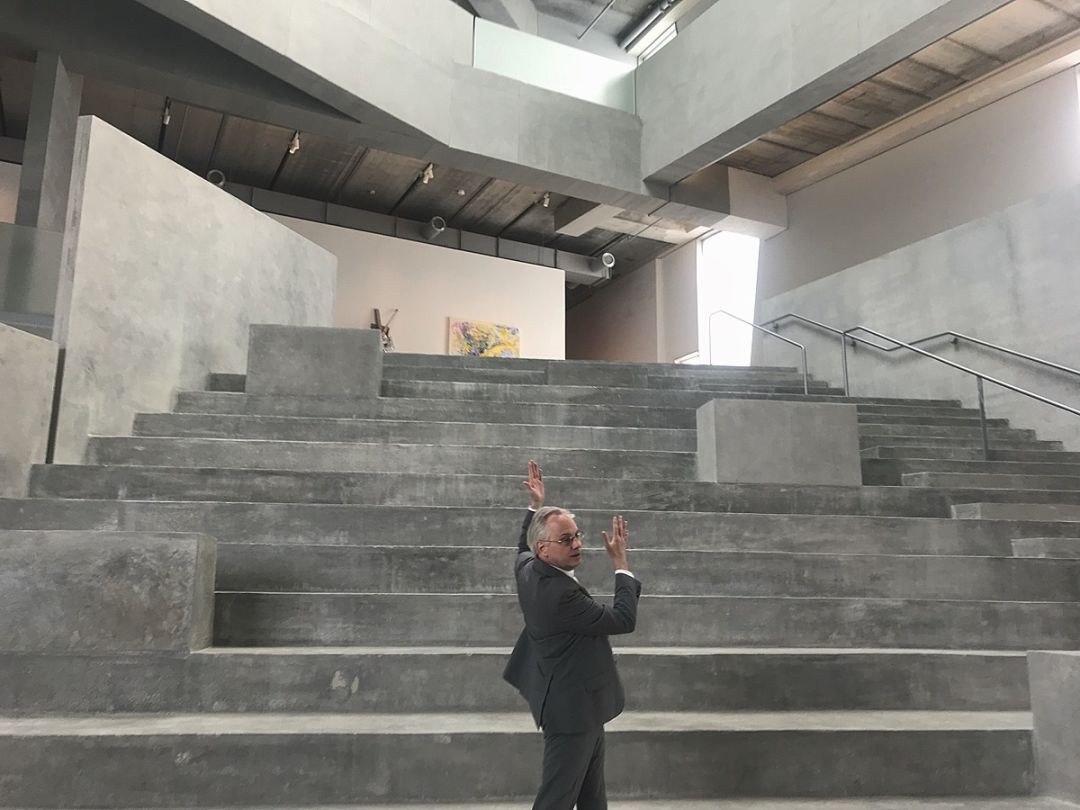
Chris McVoy of Steven Holl Architects shows off the Glassell's grand, broad-stepped staircase in the entryway. The school envisions it as something of a vertical quad where students, faculty, and the public can mingle and collaborate.
Image: Morgan Kinney
On Monday, the director almost floated with excitement as he welcomed visitors into his new palace. Inside the plate glass doors, a grand, poured-and-polished concrete staircase serves as a dramatic introduction to the school, envisioned as a gathering space for students, faculty, and the general public. Looking up, a criss-crossing tangle of staircases sure to garner a lifetime of M.C. Escher comparisons connects the three floors of studio and exhibition space, all bathed in the ubiquitous light filtered through the 170 translucent glass panes integrated into the building's structure.
Measuring in at a whopping 93,765 square feet—roughly double the previous facility—the ambitious building makes room for surging enrollment expected to level off at around 8,500 students of all ages working across practically all media, from jewelry, painting, and drawing to others experimenting with virtual reality. Havel described the school as a "generative cultural incubator," populating much of the city's art scene with fledgling talent, particularly from the school's revered Core Studio of artists and critics.
But he also emphasized the larger purpose of this gleaming, angular new building, and that has very little to do with finding the next Picasso.
"When you're dealing with 3,000 students in the summer alone, the percentage of who will be an artist versus who will simply have had an experience that allows them to be interested in culture for the rest of their life—that's really what it's about," Havel said. "The Glassell School is a mechanism for getting the community to recognize culture's importance."

